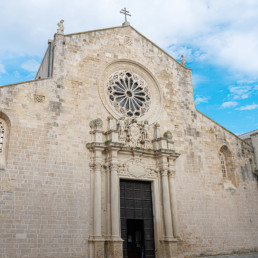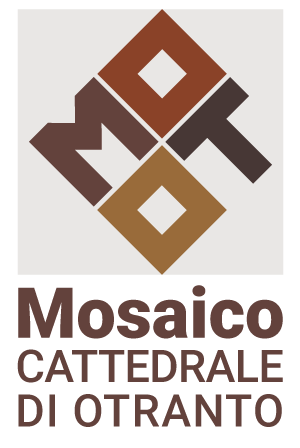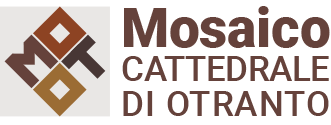Otranto in the middle ages
A crossroads between two worlds
Despite the lack of documentary evidence, written sources describe the city of Otranto as an important crossroads between two worlds: the Orient (the East) and the Occident (the West).
A favourable spot due to its geographical location at Italy’s most easterly point and in the heart of the Mediterranean, this highly populated city was the place where the cultures of East and West merged in a unique way, while its port bristled with pilgrims, merchants and adventurers coming from or heading to the Levant and the Holy Land.
Evidence of this fruitful exchange are not only the numerous Messapian, Greek, Roman and Byzantine finds unearthed by archaeologists in the region, but also the ancient Byzantine church of St Peter, the ruins of the Abbey of St. Nicholas in Casole that once stood only a few kilometres from Otranto, the region’s many rock churches, the breathtaking mosaics inside the Cathedral and the events of 1480.
From the Byzantine Era to the Empire of William of Sicily
Prior to the arrival of the Normans in the 11th century, la terra d’Otranto was a region that had been controlled by the Byzantine Empire for centuries: the language of the region was Greek, and so in turn the region’s traditions, rites and liturgy were Greek
Surviving proof of the splendour of the Byzantine era in Otranto is the chapel of San Pietro, located in the city’s historic centre; this small basilica was built on one of the highest hills in the city and today is one of the oldest places of worship in the entire Archdiocese.
Local tradition states that the church it was built in the 1st century AD.
For centuries Otranto was a Greek territory under the control of the Byzantine Empire.
When the Normans arrived in the 11th century, the region evolved into a meeting place between Latin and Greek cultures.
The Catholic Church soon imposed a policy of Latinisation in terms of language and religious celebrations, while the Normans, close followers of Papal will, were active participants in the construction of a large new church in the centre of Otranto, the Cathedral, as a tangible symbol of this shift from the Greek to the Latin rite.

The construction of the cathedral church, dedicated to the Blessed Virgin of the Annunciation, began in the late 11th century during the reign of Roger, the Norman ruler of the Duchy of Apulia and Calabria.
In 1163, during the reign of William I of Sicily the Norman, Archbishop Jonathas commissioned a mosaic that was to cover the entire floor of the church.


